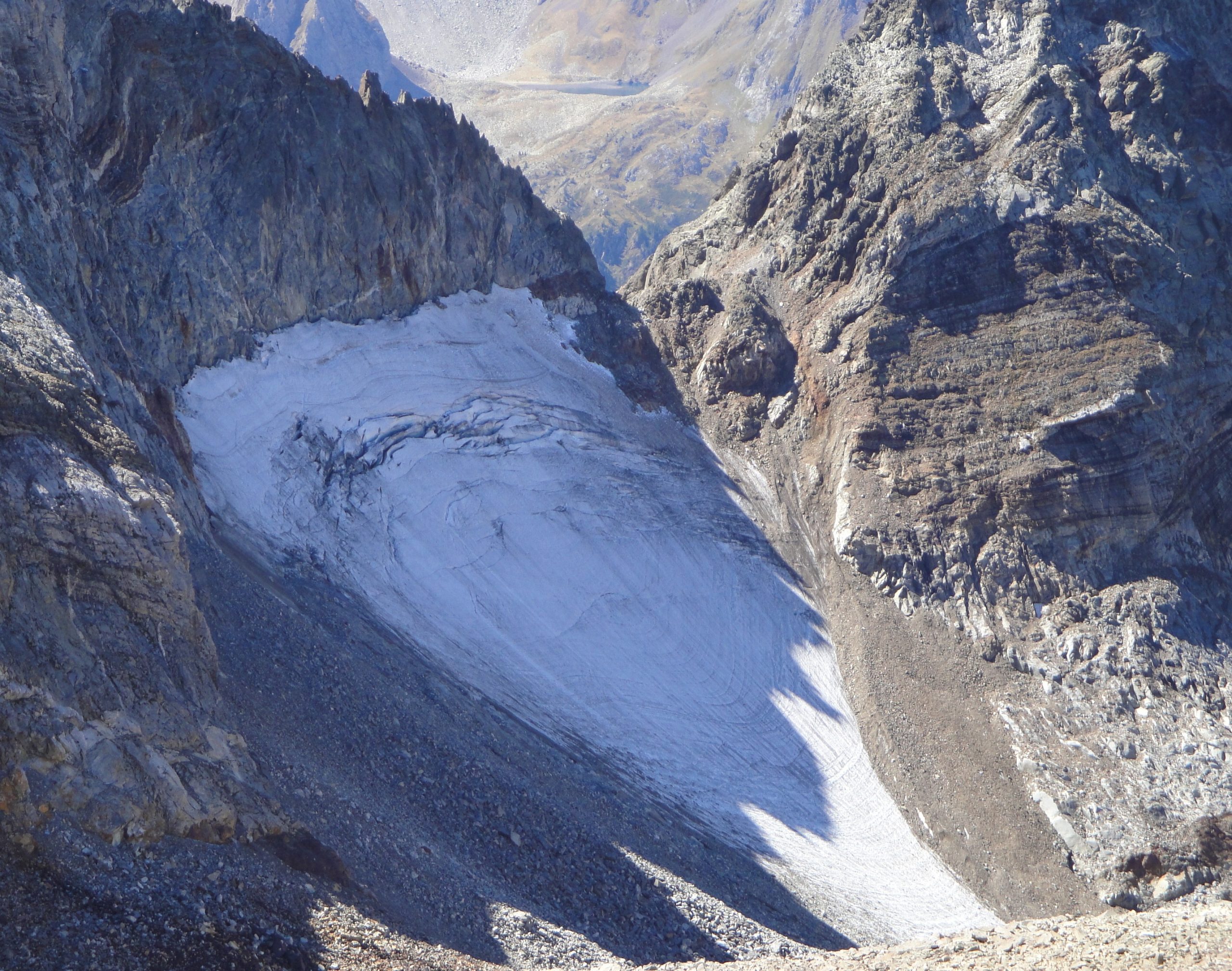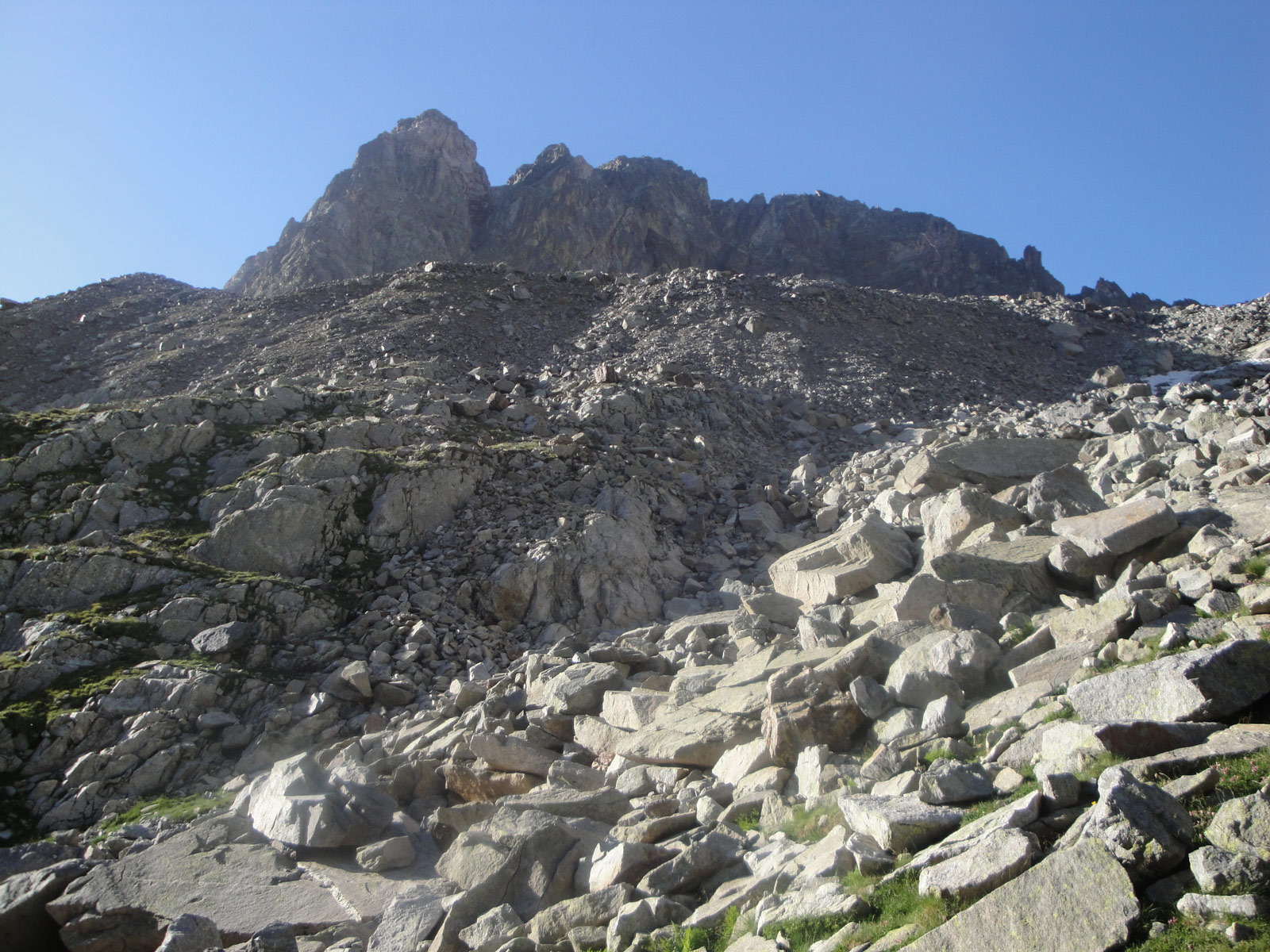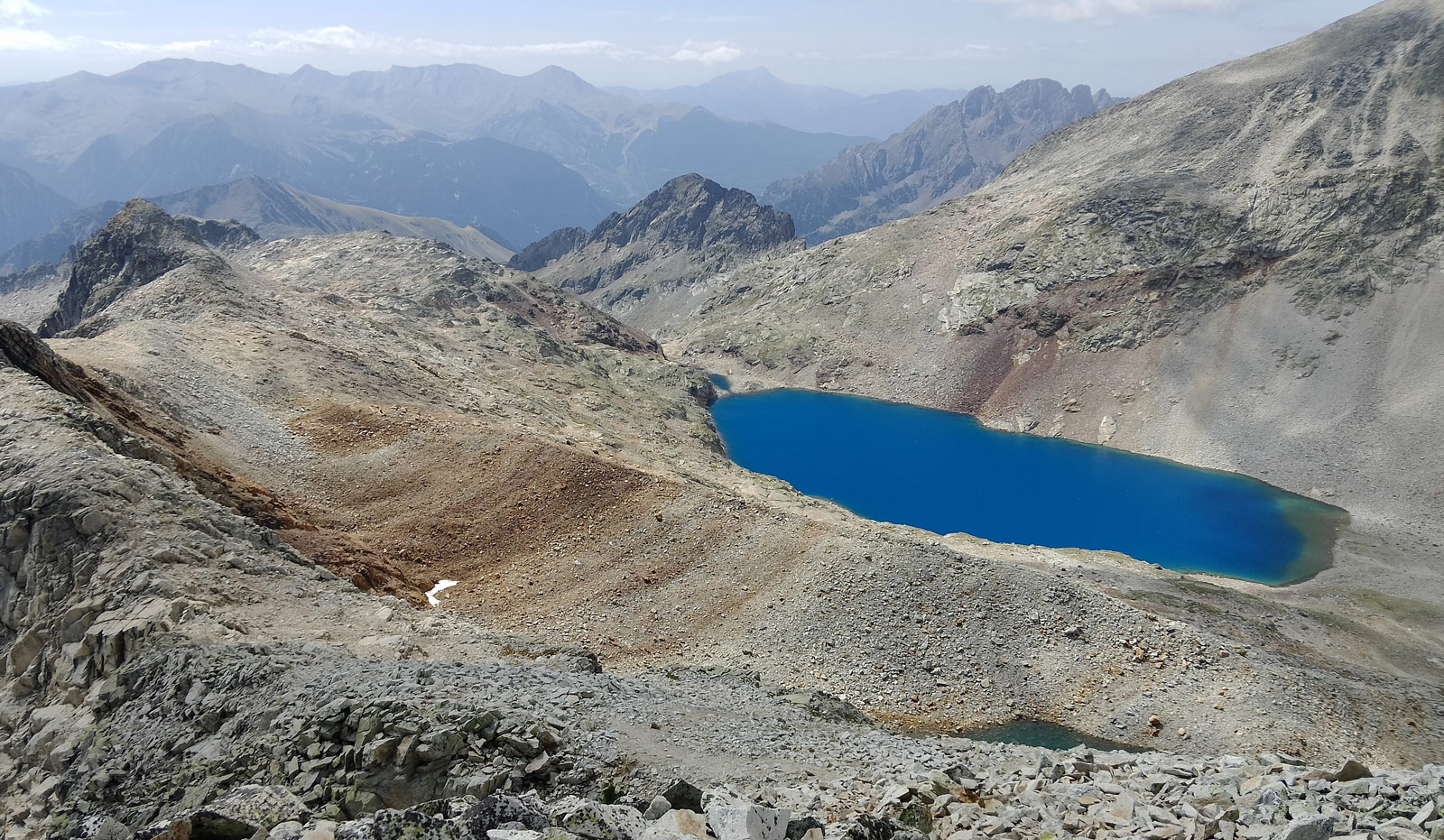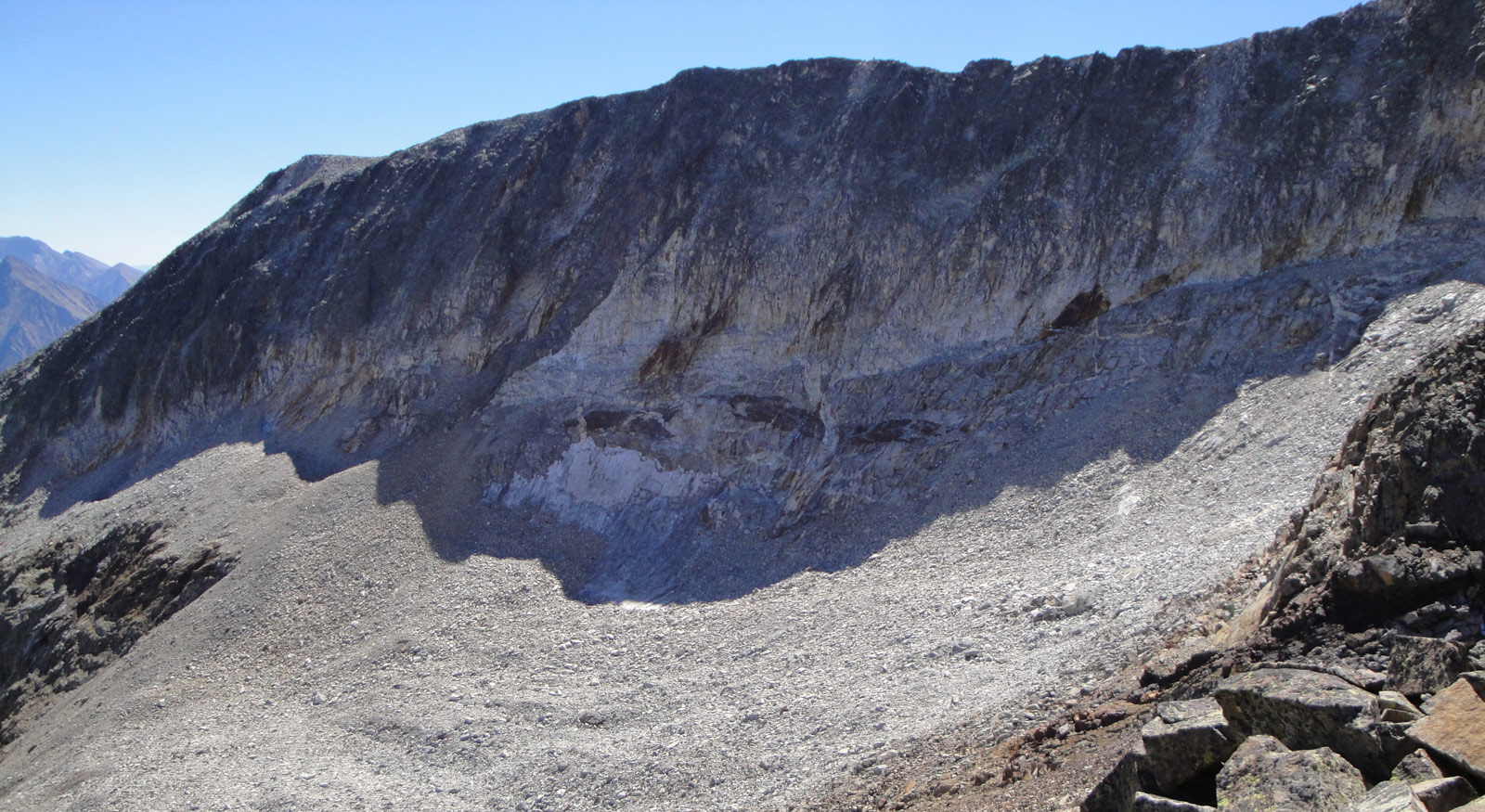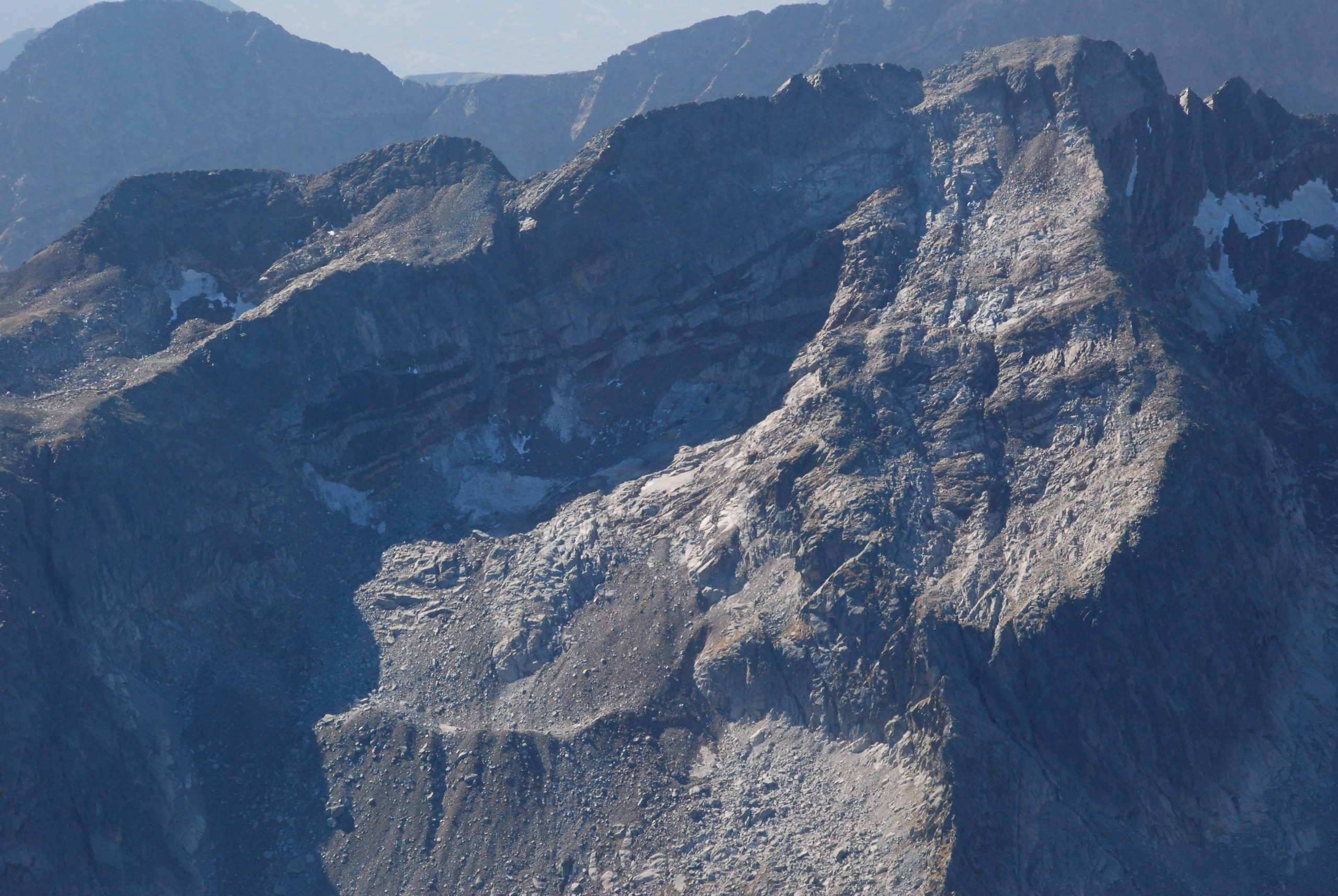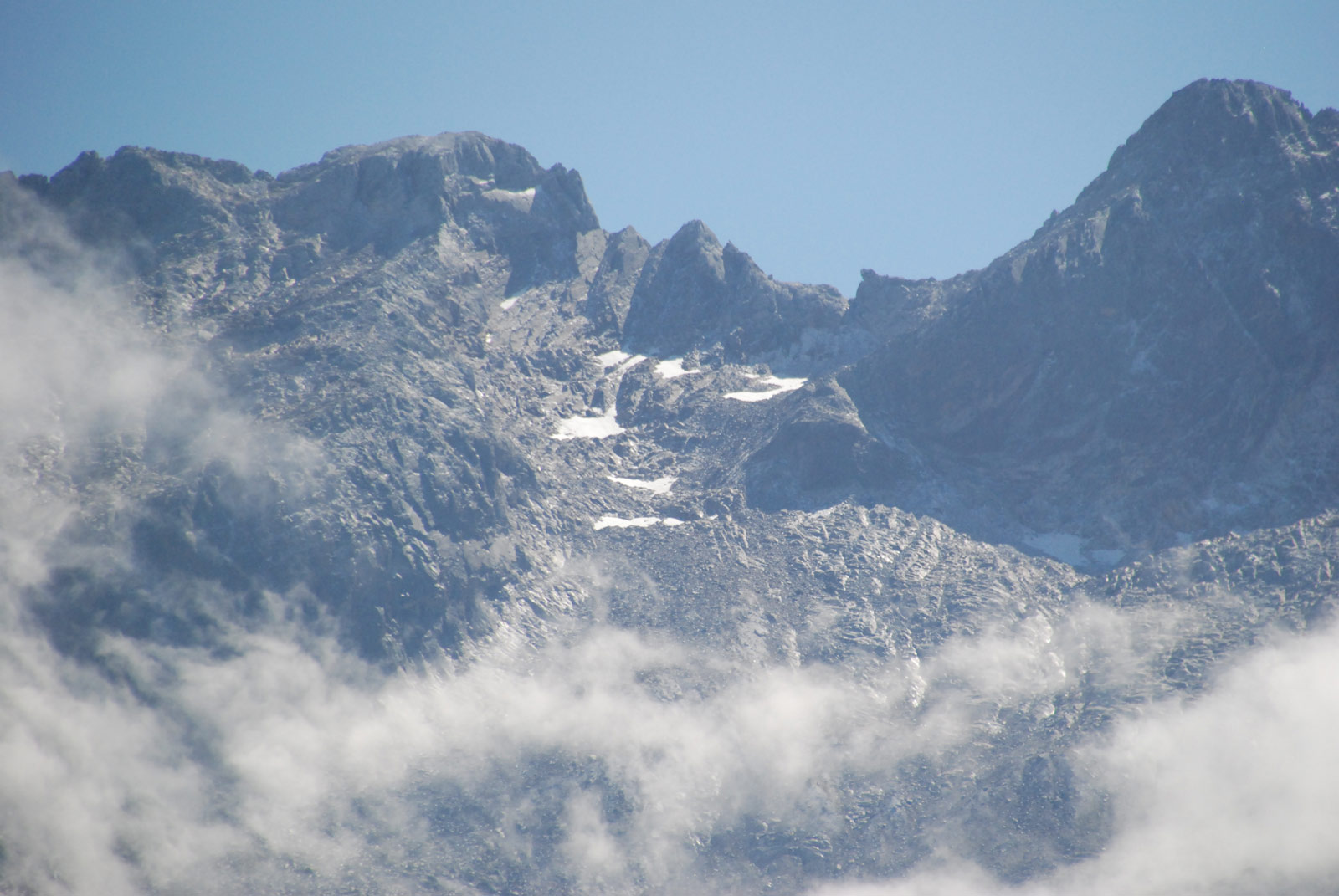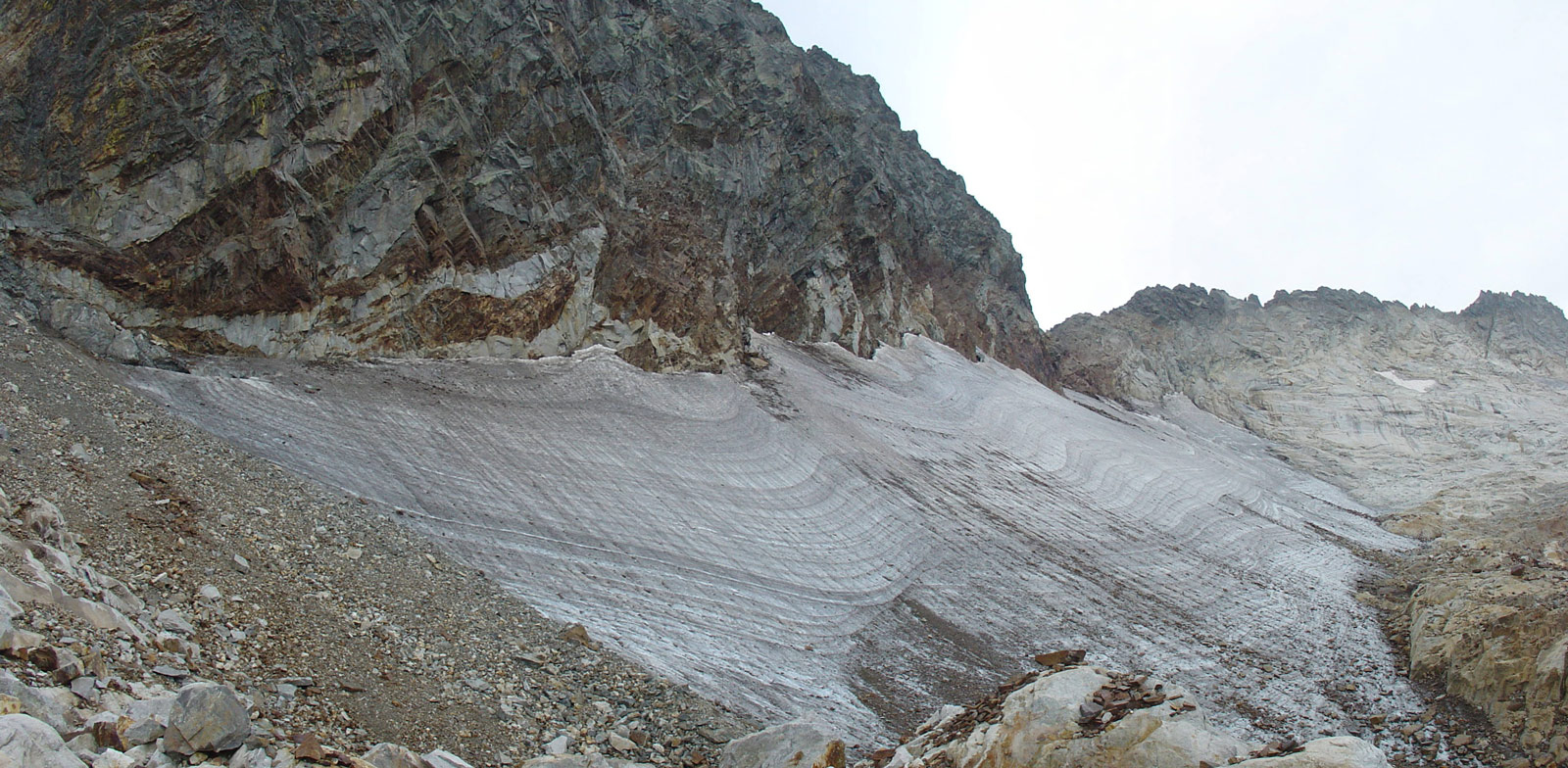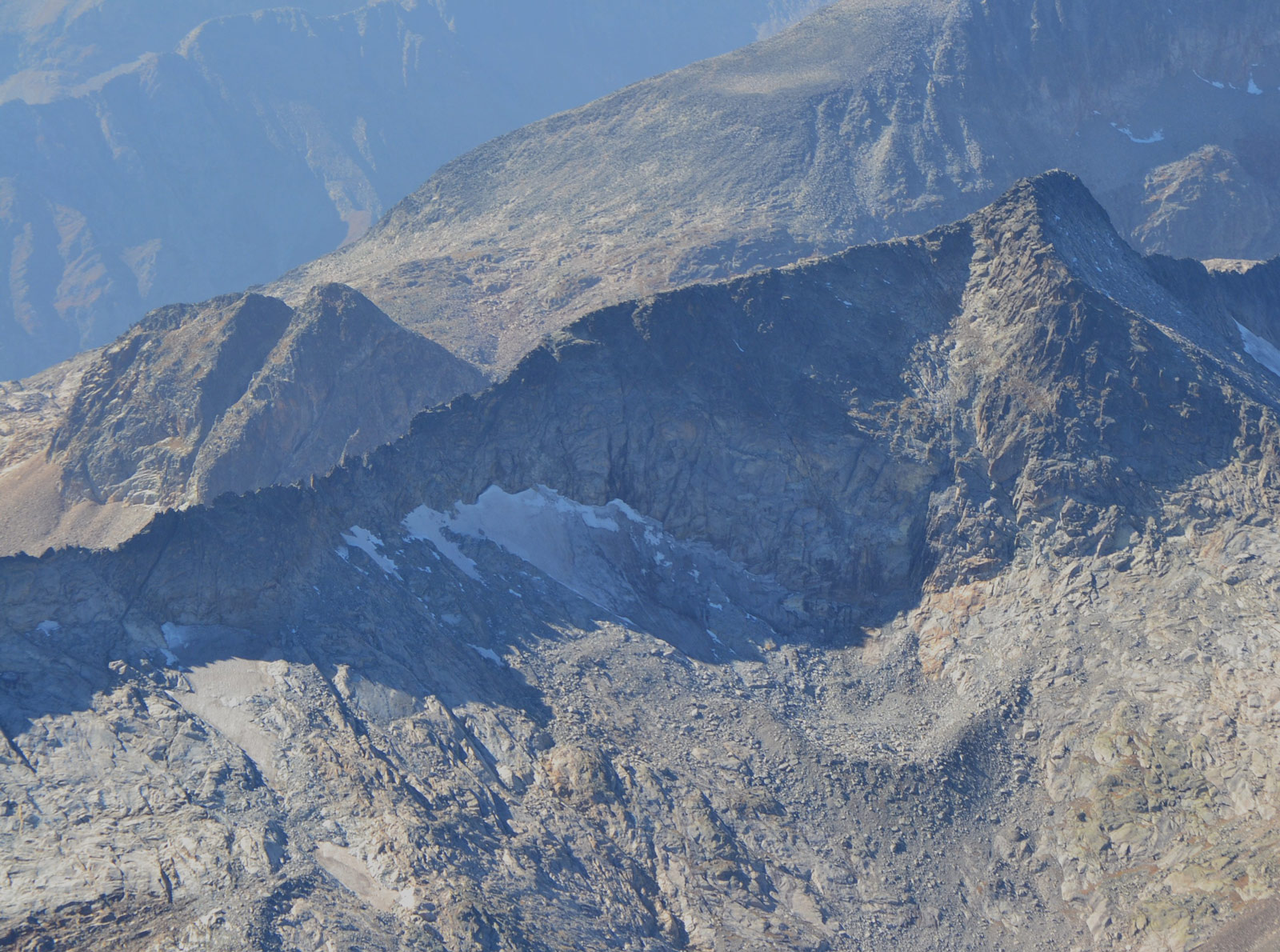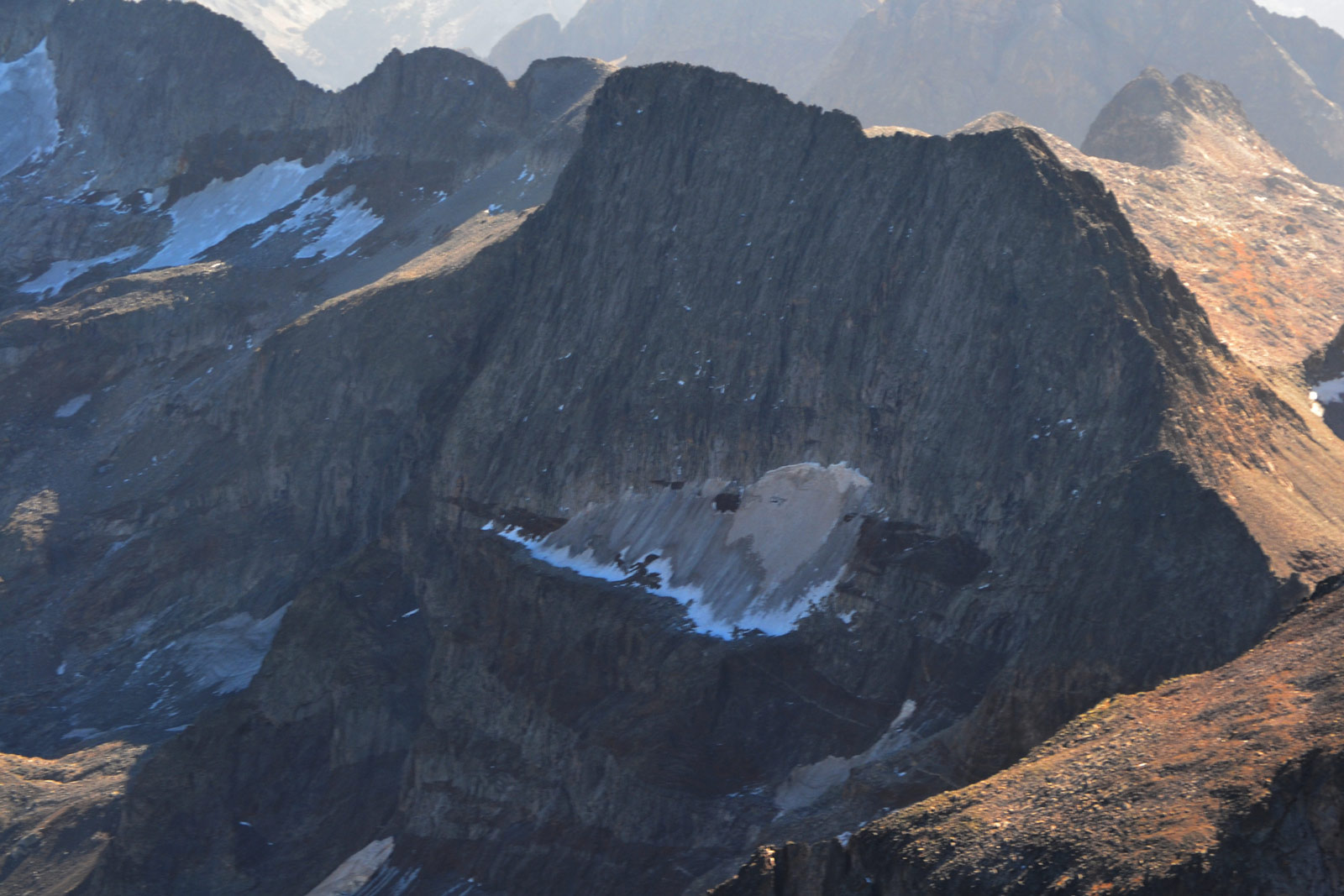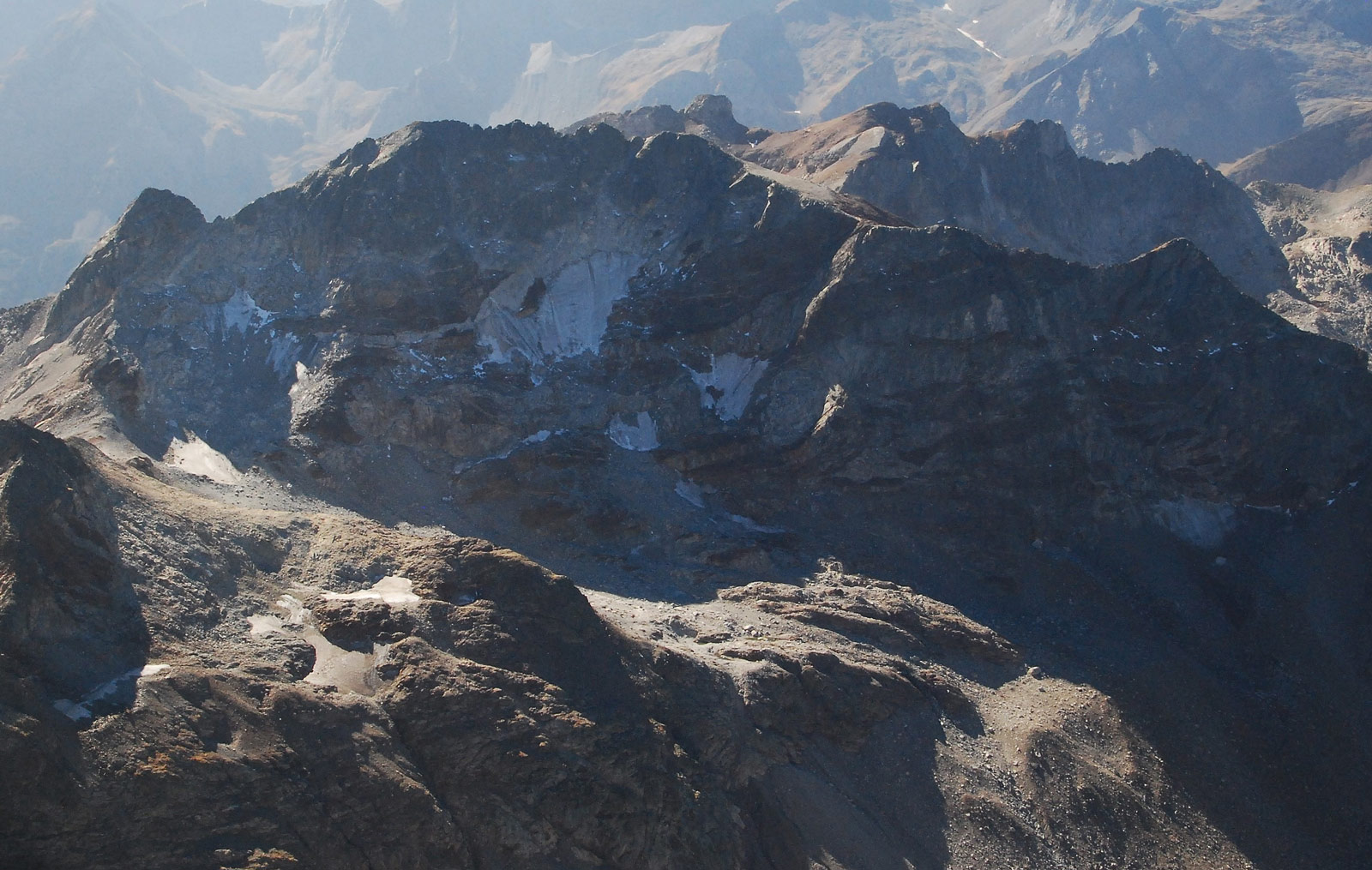During the Little Ice Age, the Portillón de Oô Glacier, together with the Seil de la Baquo Este and Oeste glaciers, formed a single glacier covering 139 hectares, the largest in the Perdiguero Massif and the third largest in the Pyrenees, surpassed only by the Monte Perdido-Aguas Negras-Pico de Cerro Negro massif. Oeste, formed a single glacier covering an area of 139 ha, the largest in the Perdiguero Massif and the third largest in the Pyrenees, surpassed only by the Monte Perdido-Cilindro de Marboré and Aneto glaciers. Although it did not stand out particularly for its maximum length of 750 m, it did have a wide head, which extended horizontally for 3 km, surpassed only by the Glacier or Monte Perdido.
Photographs from the late 19th century still show a convex ice front in a sector that was later occupied by the Portillón de Oó Glacier. Its split into an independent glacier occurred in the 1930s. In the last third of the 20th century, it represented a glacial relict inserted between the Hito Oeste de Perdiguero (3,176 m) and the Pico Olivier or Portillón de Oô (3,050 m).
In 2017, it already showed a morphology characteristic of heleros, but faint traces of movement were still visible, which ceased to be observed in 2022, when it was classified as a Helero. Since then, its deterioration has progressively worsened to its current size of 0.8 ha.
Este aparato glaciar pertenece al siguiente macizo:
35) Portillón de Oô
Comparativa de imágenes


Images showing the situation and a comparison over 17 years.
The Portillón de Oô (35) and Seil de la Baquo Este (36) glaciers in 1995. Collado (13) and Pico (14) del Portillón de Oô and the summit of Seil de la Baquo (15). In the background, the Posets massif and summit (18) with the then Posets (39 and 40) and La Paúl (41) glaciers. (Jordi Camins).
Identical perspective and references as in the previous image in 2012. After 17 years, the differences are evident (Jordi Camins).


Comparison of 132 years
In 1890, when they were joined together, they formed a single glacier that was the third largest in the Pyrenees. On the left is the area of the current Portillón de Oô glacier, and in the centre and on the right is the Seil de la Baquo Este glacier (Émile Belloc).
The same area in 2023. In relation to the Little Ice Age, the Perdiguero massif currently retains only 3.4% of its glacial ice (Salvador Ruiz).


Comparison over 22 years.
Portillón de Oô glacier in 1995. A certain convexity indicates significant ice thickness (Jordi Camins).
Portillón de Oô glacier in 2017, with slight activity, approaching the condition of a helleura (Jordi Camins).

